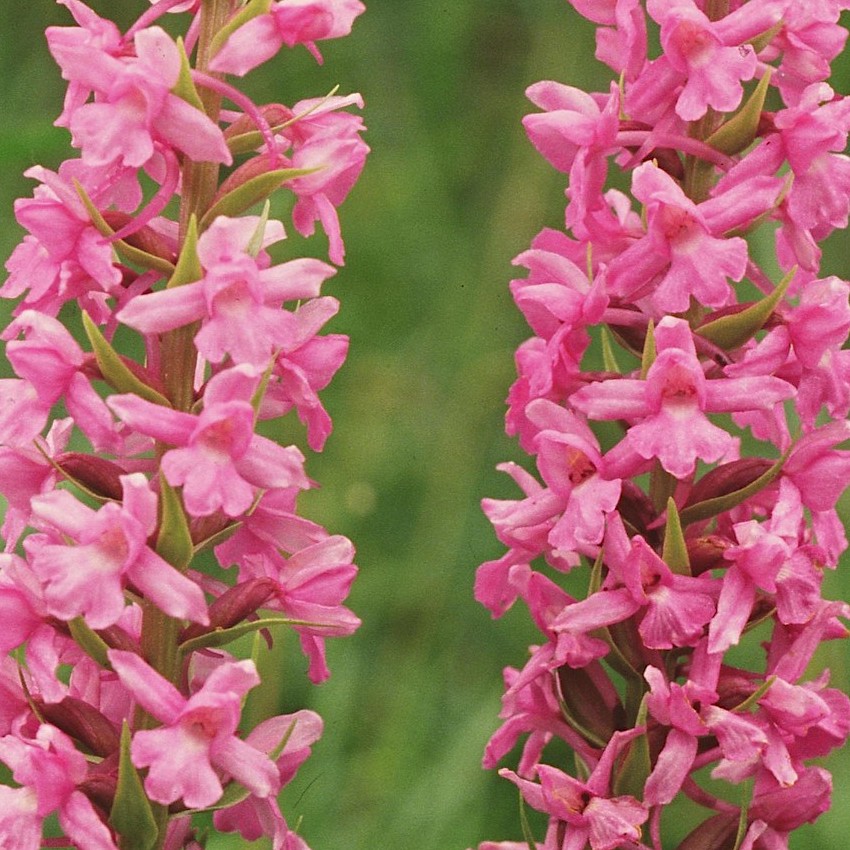
Fragrant Orchids are close to the end of flowering by July, but they (and their lovely scent) still linger on in some spots on The Lizard.
Photo: © Natural England/Peter Wakely
Scientific name: Gymnadenia conopsea
Other common names: Common Fragrant Orchid
What to look for:
• Family: Orchidaceae (Orchid family)
• Flowers: Rose-pink to purple-ish flowers have long spurs, a lip with three lobes and pointed, thin sepals, and are clustered in dense flower spikes.
• Leaves and stem: Lanceolate, unspotted leaves, opposite. The surface of the stem is striated.
• Height: 20 to 60 cm tall.
• Where: Calcareous grasslands, sometimes on acid heathland. Common to locally frequent in northern Europe and in parts of Asia.
• When: Flowers June to July.
• Habit: Upright.
By the end of July, the Fragrant Orchid is past its best but can still be found hanging on, living up to its name with its gentle aroma. The sweet orange-scented smell of the flowers is at its strongest in the evening.
Although still locally frequent and widespread across Britain, the species is declining across its range in Britain, due probably to the usual culprits of habitat change, including field ploughing and drainage.
Did you know…?
…The scientific name of the Fragrant Orchid is nothing like as pretty as its common name. The genus name Gymnadenia is from the two Greek words for nude and gland (a reference to the organs that produce its nectar). The species name conopsea means like a mosquito, perhaps because the long spur looks like a mosquito’s mouthparts.

More information and references:
Mabey, R., 1997. Flora Britannica. Chatto & Windus, London.
Meekers, T., Hutchings, M.J., Honnay, O. and Jacquemyn, H., 2012. Biological flora of the British Isles: Gymnadenia conopsea s.l. Journal of Ecology DOI: 10.1111/j.1365-2745.2012.02006.x (available here)
Rose, F. and O’Reilly, C., 2006. The Wild Flower Key, 2nd edition. Frederick Warne, London.
Stace, C., 2010. New Flora of the British Isles, 3rd edition. Cambridge University Press, Cambridge.
Published: July 2016
Author: Amanda Scott
Photos: © Natural England/Peter Wakely
